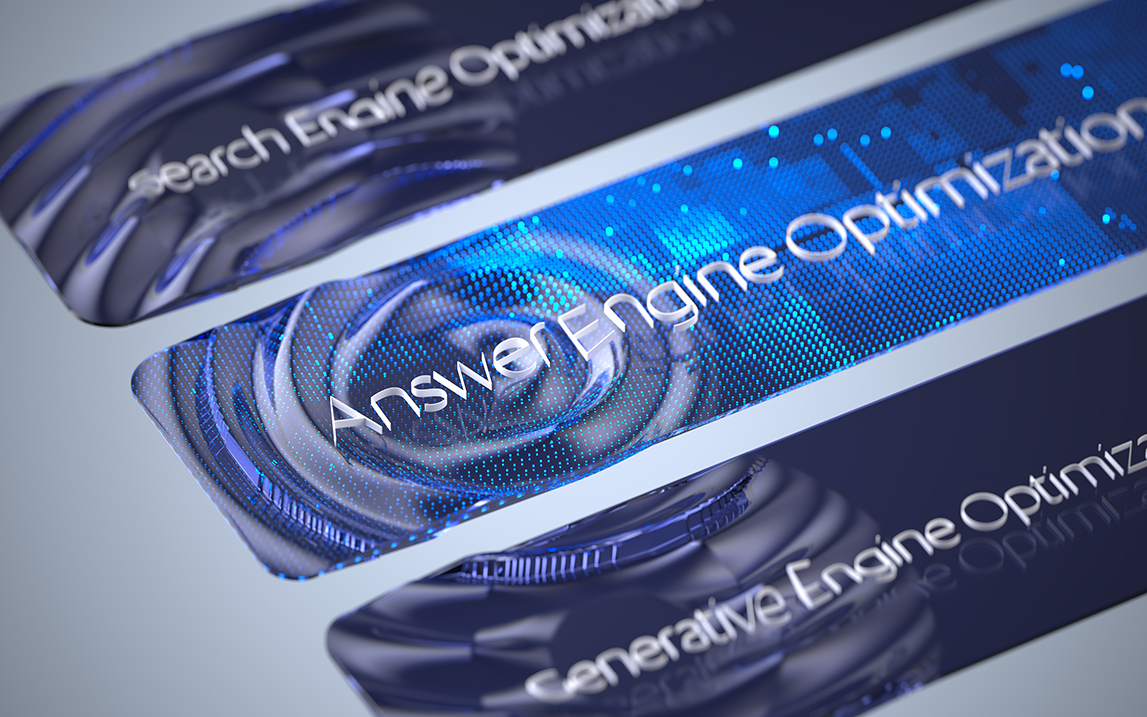
Whether you’re building a new website or optimizing an existing one, this guide walks through the foundational frameworks, content strategies, and technical standards needed to thrive in a world shaped by AI-driven search engines, Core Web Vitals, and answer-first experiences.
Why SEO, AEO, and AI Search Now Matter More Than Ever
Search engines have shifted from indexing pages to understanding intent, generating summarized responses, and evaluating the clarity and structure of content. This evolution means:
- AI-driven systems prioritize concise, authoritative answers.
- Quality, accuracy, and structure determine visibility.
- Performance and user experience impact rankings.
- Educational content earns credibility and natural backlinks.
- Schema markup improves machine interpretability.
Success now depends not only on being found—but on being understood.
Build Pages That Are Clear, Structured, and AI-Friendly
A strong page starts with organization. Modern search systems thrive on predictable, structured layouts.
Core Page Structure
- H1 aligned to the primary search intent.
- Brief intro paragraph that immediately states the value.
- A “Quick Answer” summary box for AI extraction.
- H2/H3 sections that follow a clean hierarchy.
- Bulleted lists and short paragraphs.
- FAQs based on real user questions.
- Internal links to related topics.
- Schema markup (FAQPage, HowTo, Breadcrumb, Product when relevant).
When content is easy to scan, machines understand it faster—and users engage longer.
Keyword Strategy for Humans and AI Systems
Keyword strategies now require layered intent coverage:
- Primary Keywords: High-intent phrases used in the H1, title tag, and intro.
- Secondary Keywords: Supporting variations woven into H2s.
- Semantic and LSI Keywords: Contextual terms that validate expertise.
- Conversational Variants: Natural user questions.
Covering all four layers boosts visibility across both traditional rankings and AI-generated results.
Educational Content: The New Currency of Authority
Search systems reward content that teaches. High-value educational material builds trust and naturally earns backlinks.
Effective educational resources include guides, explanations, demonstrations, and expert-backed insights. The more actionable and useful the content, the more likely it is to be referenced—improving organic authority.
Backlinks: Quality Over Quantity
Backlinks remain a major ranking factor, but success relies on earning links through trust.
Best practices include publishing educational content, creating shareable resources, citing authoritative sources, and avoiding low-quality link schemes.
Technical SEO and Core Web Vitals in 2025/2026
Technical health is essential. Key metrics include:
- LCP (Largest Contentful Paint): < 2.5 seconds.
- CLS (Cumulative Layout Shift): < 0.1.
- INP (Interaction to Next Paint): minimal delay.
Technical essentials include fixing errors, optimizing mobile design, cleaning code, compressing images, and maintaining proper structured data.
AI Search Optimization: Preparing for Answer-First Experiences
As AI search becomes more conversational, content must be extractable and contextual.
Best practices include answer-first writing, using clear definitions and summaries, adding step-by-step instructions, and maintaining consistency across pages.
A Repeatable Workflow for Optimized Website Development
Pre-Launch
Benchmark performance, map redirects, prepare metadata, validate schema, and set up analytics.
Post-Launch
Audit content, metadata, schema, internal links, educational resources, tracking events, and performance metrics.
Ongoing
Monitor rankings, refresh content, expand resources, and track emerging search patterns.
A Practical Template for High-Performing Web Pages
- H1: Primary Keyword + Intent
- Intro Paragraph
- Quick Answer Box
- What This Page Covers
- What Is [Topic]?
- How It Works (steps)
- Benefits or Key Facts
- Educational Resources
- FAQs
- Additional Support
- Structured Data
Frequently Asked Questions (FAQ)
What is the difference between SEO and AEO?
SEO focuses on improving visibility in traditional search results, while AEO optimizes content so answer engines and AI systems can extract clear, direct responses.
Why is AI Search Optimization important?
AI search systems generate summarized answers. Content must be structured, factual, and easy for machines to interpret to appear in these results.
How important is structured data in 2025/2026?
Extremely important. Schema markup enhances machine understanding and increases the likelihood of appearing in AI-generated summaries and enhanced search features.
Does educational content really improve rankings?
Yes. High-value educational content builds authority, increases engagement, and naturally earns backlinks.
What role do Core Web Vitals play?
They measure real-world user experience. Meeting Core Web Vitals benchmarks improves search visibility and user satisfaction.
How often should content be updated?
Evergreen pages should be reviewed every 6–12 months to refresh facts and maintain alignment with current search standards.
Do backlinks still matter?
Yes, but relevance and authority matter more than quantity. High-quality backlinks provide the strongest ranking benefits.
Final Thoughts
The future of search requires clarity, structure, performance, and authoritative educational content. By combining modern SEO principles with AEO and AI search optimization, any website can build sustainable visibility and long-term organic growth. Contact us for an SEO or AEO website audit.

